1. Early Life and Background
Theo van Gogh's early life was marked by his distinguished family lineage and a non-traditional educational path, which laid the groundwork for his later controversial career.
1.1. Birth and Family
Theodoor van Gogh was born on 23 July 1957 in The Hague, Netherlands, to Anneke and Johan van Gogh. His father, Johan van Gogh (1922-2009), served in the Dutch secret service, then known as the BVD (now AIVD). Theo was named after his paternal uncle, also named Theo, who was captured and executed as a resistance fighter during the German occupation of the Netherlands in World War II.
1.2. Education
Van Gogh briefly attended the University of Amsterdam but dropped out of law school, choosing instead to pursue a career in the arts. His self-proclaimed passion was filmmaking.
1.3. Ancestry
Theo van Gogh was a great-grandson of Theo van Gogh, a prominent art dealer who was the brother of the renowned painter Vincent van Gogh. His paternal grandfather was Vincent Willem van Gogh (1890-1978), and his paternal grandmother was Josina Wibaut (1890-1933). Through his great-grandparents, Theo van Gogh (art dealer) and Johanna van Gogh-Bonger, he was directly descended from a family deeply embedded in Dutch art history.
2. Career
Theo van Gogh engaged in a diverse range of professional activities, establishing himself as a significant, albeit controversial, figure across Dutch cinema, journalism, and television.
2.1. Filmmaking Career
Van Gogh made his debut as a film director with Luger in 1981. He was recognized for his work, receiving a Gouden Kalf (the Dutch equivalent of an Academy Award) for his film Blind Date (1996) and another for In het belang van de staat (In het belang van de staatIn the Interest of the StateDutch, 1997). For the latter, he also earned a "Certificate of Merit" from the San Francisco International Film Festival. Many of his films explored political themes. His last completed film before his murder was 06/05 (2004), a fictionalized account of the assassination of Dutch politician Pim Fortuyn. It was released posthumously in December 2004, a month after Van Gogh's death.
2.2. Writing and Journalism
In the 1980s, Van Gogh began a career as a newspaper columnist, contributing to various publications, including the daily newspaper Metro. He was renowned for his provocative writing style, which often involved a cynical and mocking tone, and personal animosity, leading to numerous lawsuits from other writers and public figures. He frequently used his columns to express his frustrations with politicians, actors, film directors, writers, and others he considered part of "the establishment." Due to controversies, he eventually shifted his primary writing platform to his own website, De Gezonde Roker (De Gezonde RokerThe Healthy SmokerDutch). Through this platform, he voiced harsh criticism of multicultural society, once stating that the Netherlands was so plagued by social turmoil that it risked becoming "something Belfast-like." His final book, Allah weet het beter (Allah weet het beterAllah Knows BestDutch), published in 2003, contained strong condemnations of Islam.
2.3. Acting and Television Work
Beyond directing and writing, Van Gogh also appeared as an actor, notably in the film De noorderlingen (De noorderlingenThe NorthernersDutch, 1992). From the 1990s onward, he expanded his professional scope into television production, contributing to various programs.
3. Views and Activism
Theo van Gogh's public persona was largely defined by his outspoken and often controversial views on society, religion, and politics, which he actively expressed through his work and activism.
3.1. Criticism of Islam and Societal Views
Van Gogh was a prominent and vocal critic of Islam, particularly after the Iranian Revolution and the September 11 attacks. His book Allah weet het beter (Allah weet het beterAllah Knows BestDutch) was a cynical and mocking critique of Islamic society. He strongly supported Ayaan Hirsi Ali, a Somali-born liberal politician and outspoken critic of Islam, who had immigrated to the Netherlands to escape an arranged marriage.
In collaboration with Hirsi Ali, Van Gogh directed the 10-minute short film Submission: Part 1 in 2004. The film addressed violence against women in Islamic societies, telling the stories of four abused Muslim women. The title, Submission, is an English translation of the word "Islam." In the film, women's naked bodies, adorned with texts from the Qur'an written in henna (alluding to traditional wedding rituals), were veiled with semi-transparent shrouds as the women knelt in prayer, narrating their experiences as if speaking to Allah. A scene depicted a woman in a robe with Qur'an verses written on her body, revealing bruise marks.
Following the film's broadcast on Dutch public television in August 2004, a journalist, Francisco van Jole, accused Hirsi Ali and Van Gogh of plagiarism, alleging that they had appropriated ideas from Iranian-American video artist Shirin Neshat, whose work also featured Arabic text projected onto bodies. After the broadcast, both Van Gogh and Hirsi Ali received death threats. However, Van Gogh did not take the threats seriously and refused any protection, famously stating, "Nobody kills the village idiot"-a term he often used to describe himself.
3.2. Political Stance
Van Gogh was a member of the Dutch Republican Society movement, which advocated for the abolition of the monarchy of the Netherlands. He was a close friend and staunch supporter of the controversial Dutch politician Pim Fortuyn, who was assassinated in 2002. Van Gogh's engagement with political discourse was characterized by his critical stance against established norms and his support for figures challenging the status quo.
4. Personal Life
Theo van Gogh was known for his strong nihilistic view of life. He openly consumed alcohol and used cocaine, and held a cynical view on romance. Despite appearing to enjoy his life, he reportedly stated that he did not care if he died.
5. Murder
The assassination of Theo van Gogh was a highly publicized event that deeply impacted Dutch society and sparked widespread debate.
5.1. The Assassination Event
On the morning of 2 November 2004, at approximately 9 a.m., Theo van Gogh was cycling to work in Amsterdam East, at the corner of Linnaeusstraat and Mauritskade, in front of a flower shop. He was shot eight times and had his throat slit, dying instantly. The perpetrator left two knives stuck in Van Gogh's body, one of which pinned a five-page note to his chest. The note contained death threats directed at Ayaan Hirsi Ali, who subsequently went into hiding, and also threatened Western countries and Jews. It referenced the ideologies of the Egyptian organization Jama'at al-Muslimin, and included lines from the Qur'an.
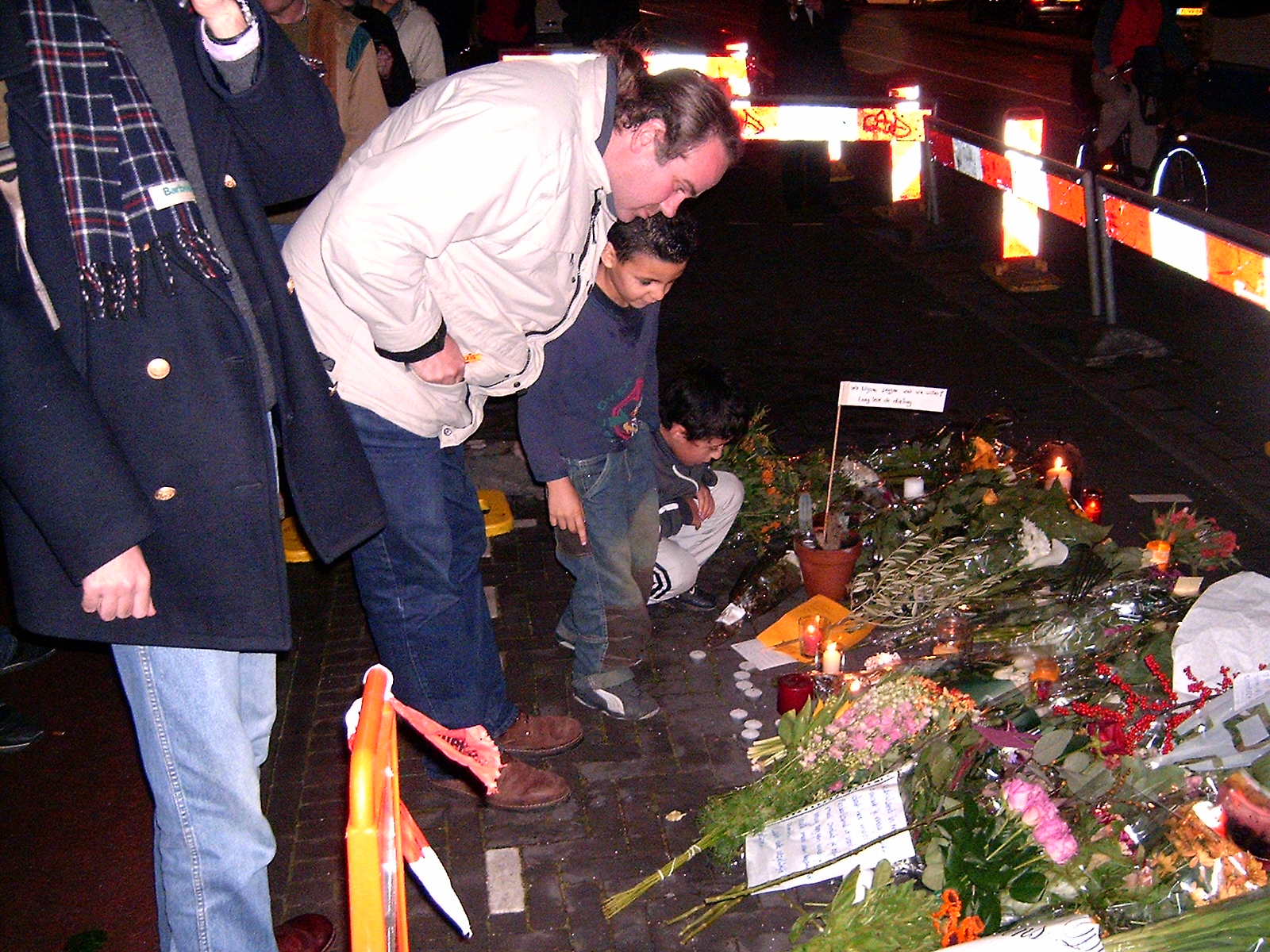
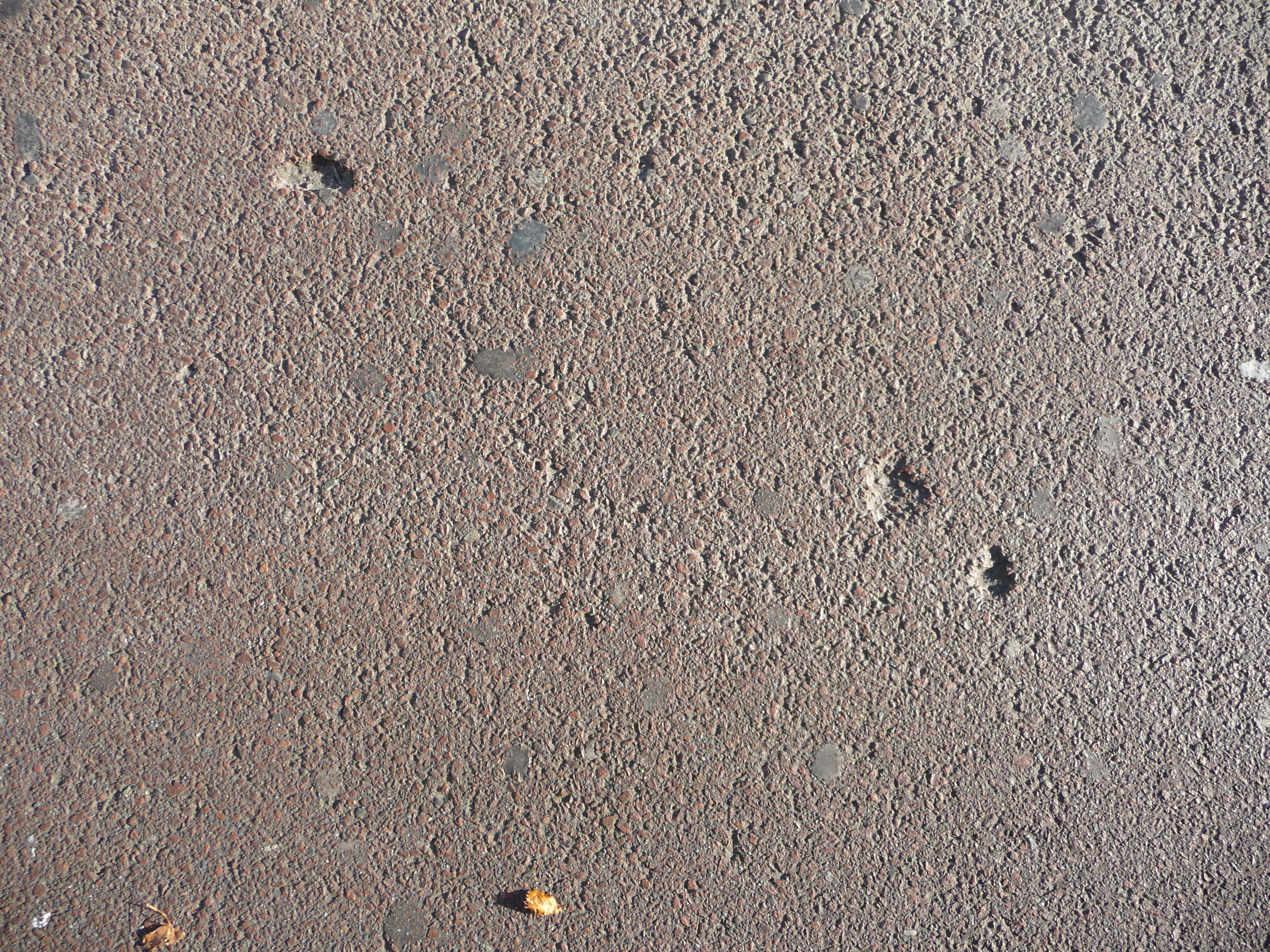
5.2. Perpetrator and Motive
The killer was identified as Mohammed Bouyeri, a 26-year-old Dutch-Moroccan citizen, who also held Spanish-Moroccan dual nationality. Bouyeri was apprehended by police after a chase and a shootout, during which he also injured some bystanders. Authorities alleged that he had terrorist ties with the Dutch Islamist Hofstad Network.
Bouyeri was charged with the attempted murder of several police officers and bystanders, illegal possession of a firearm, and conspiring to murder others, including Ayaan Hirsi Ali. On 26 July 2005, he was convicted and sentenced to life imprisonment with no chance of parole. His primary motive for the assassination was his objection to Van Gogh's film Submission, which he perceived as a strong criticism of Islam.
5.3. Immediate Aftermath
The murder of Theo van Gogh sparked widespread outrage and grief across the Netherlands. Flowers, notes, drawings, and other expressions of mourning were left at the scene of the murder. His cremation ceremony took place on 9 November. Shortly before his death, Van Gogh had discussed his funeral wishes with friends, fearing he might not survive a planned flight to New York. His father suggested that his son would have appreciated the media attention provoked by his murder.
The day after the assassination, Dutch police arrested eight individuals allegedly belonging to the Hofstad Network. Six of the detainees were Dutch-Moroccan, one was Dutch-Algerian, and one had dual Spanish-Moroccan nationality. The Dutch Complaints Bureau for Discrimination on the Internet (MDI) received numerous complaints about websites that allegedly praised the murder and made death threats against other individuals.
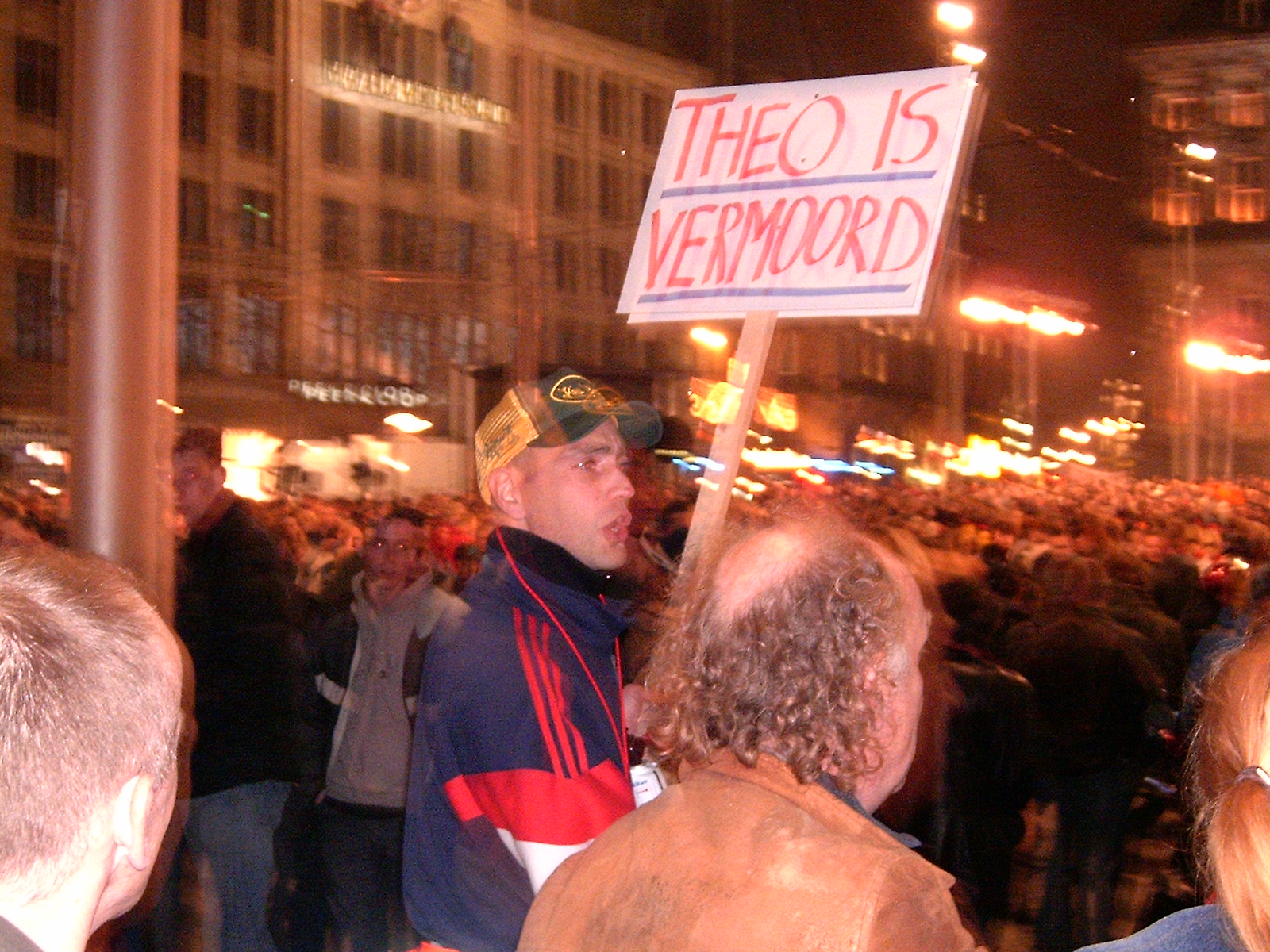
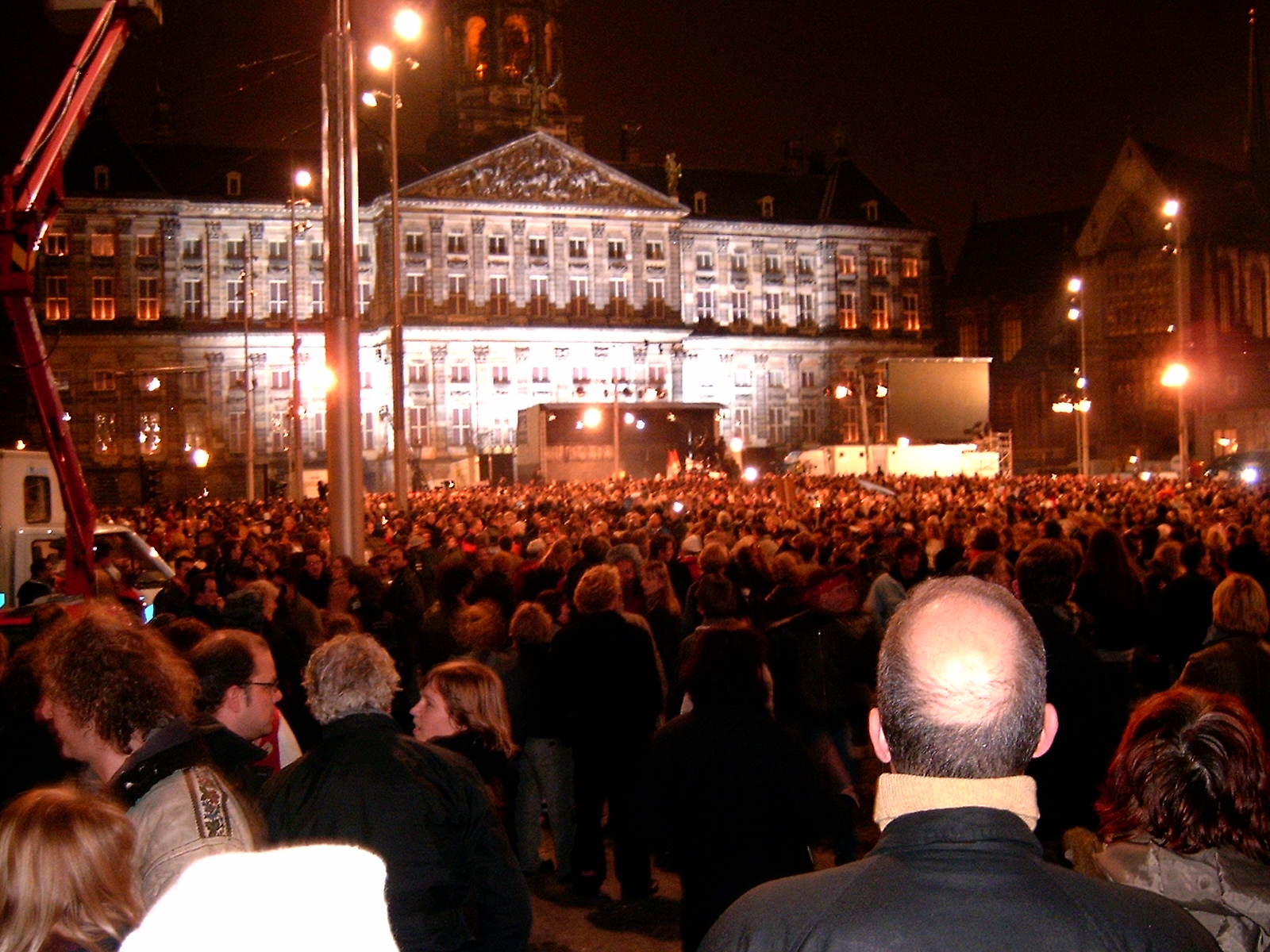
In the immediate aftermath, a wave of retaliatory violent incidents against Muslims occurred. This began with four attempted arson attacks on mosques during the weekend of 5-7 November. A bomb exploded at a Muslim school in Eindhoven, and an arson attack destroyed a Muslim primary school in Uden in December 2004. The Dutch Monitoring Centre on Racism and Xenophobia recorded a total of 106 violent incidents against Muslim targets in November. The National Dutch Police Services Agency (KLPD) recorded 31 instances of violence against mosques and Islamic schools between 23 November and 13 March 2005. Conversely, by 8 November, Christian churches were also reported as targets of vandalism and arson attacks. A report for the Anne Frank Foundation and the University of Leiden documented a total of 174 violent incidents between 2 and 30 November, noting that mosques were targeted 47 times and churches 13 times.
5.4. Societal Impact
Theo van Gogh's murder significantly widened and polarized the debate in the Netherlands concerning the social position of its more than one million Muslim residents. It also brought the country's liberal tradition further into question, coming just two years after the murder of Pim Fortuyn.
In response to the escalating tensions and controversial statements regarding Islamic, Christian, and Jewish religions, such as those made by Van Gogh, the Dutch Minister of Justice, Christian Democrat Piet Hein Donner, suggested that Dutch blasphemy laws should either be applied more stringently or made stricter. In contrast, the liberal D66 party proposed scrapping the blasphemy laws entirely.
Geert Wilders, then an independent member of the House of Representatives, advocated for a five-year halt to immigration from non-Western societies, stating, "The Netherlands has been too tolerant to intolerant people for too long. We should not import a retarded political Islamic society into our country." Both Wilders and Ayaan Hirsi Ali went into hiding for several weeks following the murder. Wilders has remained under bodyguard protection ever since, while Hirsi Ali eventually relocated to the United States.
Theo van Gogh's son, Lieuwe van Gogh, claimed to have been attacked on several occasions by young people of Moroccan and Turkish descent, alleging that the police did not provide him with help or protection. However, the police denied receiving any reports of such attacks.
6. Legacy and Honors
Theo van Gogh's death left a lasting impact on discussions surrounding freedom of expression and societal values in the Netherlands and beyond.
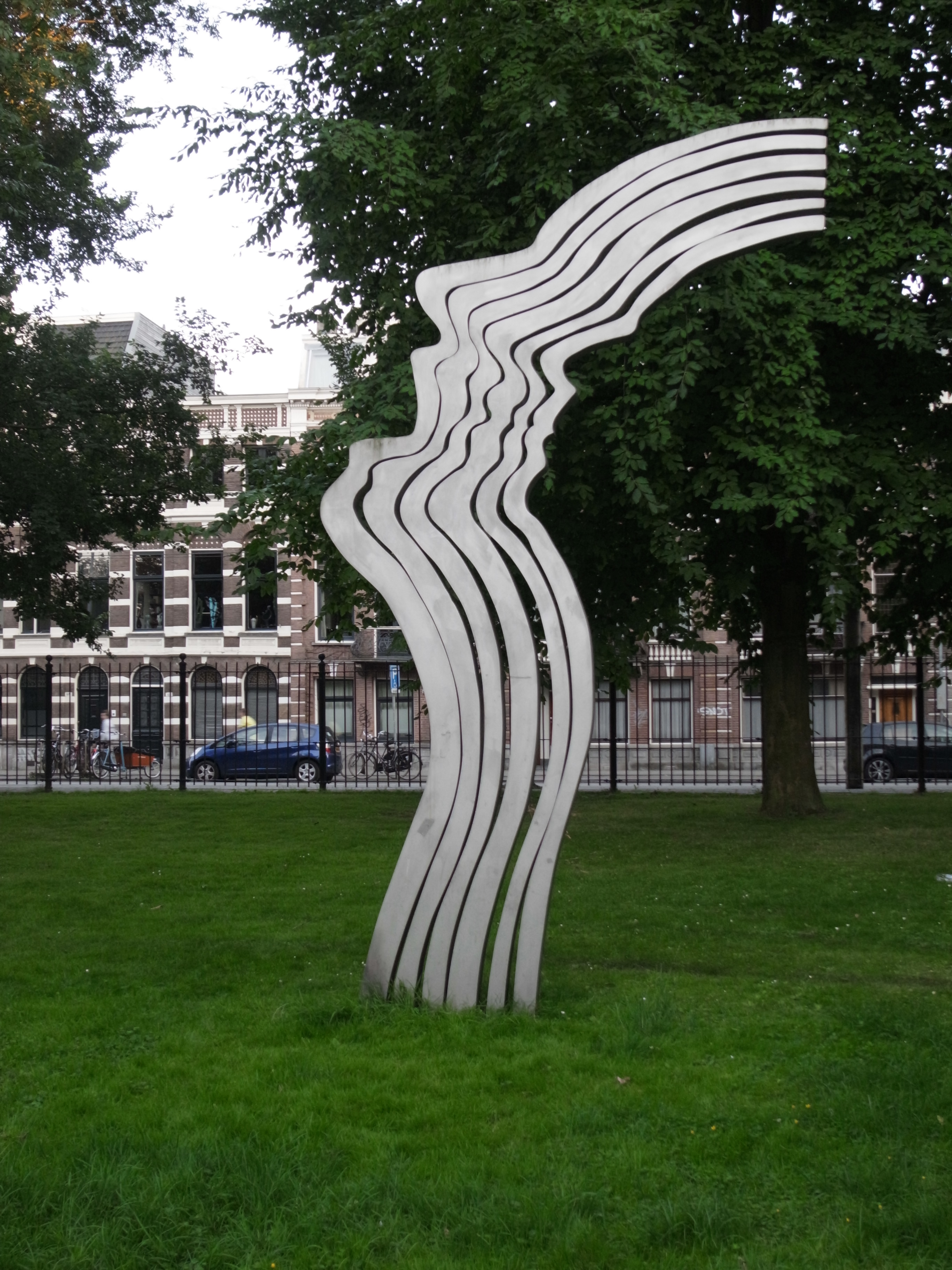
On 18 March 2007, a sculpture honoring Theo van Gogh, titled De Schreeuw (De SchreeuwThe ScreamDutch), was unveiled in Amsterdam. It is situated in the Oosterpark, a short distance from where Van Gogh was murdered, serving as a symbol of freedom of speech. A private trust, the Foundation for Freedom of Expression, was established to help fund protection for critics of Islam and Muslims.
In the English-speaking world, a controversy arose following Rohan Jayasekera's article on Van Gogh published in Index on Censorship. Jayasekera, the Associate Editor of the magazine, described Van Gogh as a "free-speech fundamentalist" who had been on a "martyrdom operation," roaring his Muslim critics into silence with obscenities, and engaging in an "abuse of his right to free speech." He characterized Van Gogh's film Submission as "furiously provocative." Jayasekera wrote that Van Gogh's death was "A sensational climax to a lifetime's public performance, stabbed and shot by a bearded fundamentalist, a message from the killer pinned by a dagger to his chest, Theo van Gogh became a martyr to free expression." He added that Van Gogh's passing was "marked by a magnificent barrage of noise as Amsterdam hit the streets to celebrate him in the way the man himself would have truly appreciated," and remarked on the timing, "Just as his long-awaited biographical film of Pim Fortuyn's life is ready to screen. Bravo, Theo! Bravo!" Both left- and right-wing commentators criticized the article. In December 2004, Nick Cohen of The Observer reported that Jayasekera had no regrets and stated that Index on Censorship was as concerned with fighting 'hate speech' as protecting free speech. This account was later repudiated by the editor of Index on Censorship in a letter to The Observer.
7. Works
Theo van Gogh's prolific career included numerous books and a wide range of film and television productions.
7.1. Books
- Engel ("Angel", 1990)
- Er gebeurt nooit iets ("Nothing Ever Happens", 1993)
- Sla ik mijn vrouw wel hard genoeg? ("Am I Beating My Wife Hard Enough?", 1996)
- De gezonde roker ("The Healthy Smoker", 2000)
- Allah weet het beter ("Allah Knows Best", 2003)
- De tranen van Mabel ("Mabel's Tears", with Tomas Ross, 2004)
7.2. Filmography
- Luger (1982)
- Een dagje naar het strand ("A Day at the Beach", 1984)
- Charley (1986)
- Terug naar Oegstgeest ("Back to Oegstgeest", 1987)
- Loos ("Wild", 1989)
- Vals licht ("False Light", 1993)
- Ilse verandert de geschiedenis ("Ilse Changes History", 1993)
- 1-900 (1994)
- Reunie ("Reunion", 1994)
- Eva (1994)
- Een galerij: De wanhoop van de sirene ("A Gallery: The Siren's Despair", 1994)
- De eenzame oorlog van Koos Tak ("Koos Tak's Lonely War", 1995)
- Blind Date (1996)
- Hoe ik mijn moeder vermoordde ("How I Murdered My Mother", 1996)
- In het belang van de staat ("In the Interest of the State", 1997)
- Au ("Ouch", 1997)
- De Pijnbank ("The Rack", 1998)
- Baby Blue (2001)
- De nacht van Aalbers ("Aalbers's Night", 2001)
- Najib en Julia (2002). A television play based on William Shakespeare's Romeo and Juliet, featuring a white upper-class girl and a young pizza delivery man of Moroccan descent.
- Interview (2003), a film where a cynical journalist interviews an actress-cum-socialite.
- Zien ("Seeing", 2004)
- "Submission: Part 1" (2004). The first of a planned series.
- Cool (2004), a film about young offenders, some of Moroccan descent, who played themselves.
- 06/05 (2004). A fact-based drama about the assassination of Pim Fortuyn.
- Medea (2005). An adaptation of Medea.
7.2.1. Unfinished projects
- Bad (A "lesbian road movie"). Production was planned for 2005.
- Duizend en één dag ("A Thousand and One Days"). A drama series about young Muslims struggling with their faith. Although this project had not reached pre-production, Van Gogh had already secured a broadcaster for the series: the Dutch Muslim Broadcasting Organisation NMO.
8. Assessment and Controversy
Theo van Gogh's career and public life were marked by significant critical evaluations and ongoing controversy, particularly concerning his provocative style and his views on sensitive societal and religious topics. His writings and films often employed a cynical and mocking tone, which, while lauded by some as courageous and uncompromising, was criticized by others as inflammatory and personally hostile. This approach frequently led to legal disputes and the termination of his columns from various publications, forcing him to disseminate his views through his personal website.
His most notable and controversial work, the film Submission, co-created with Ayaan Hirsi Ali, directly challenged perceptions of women's rights within Islamic societies. While intended to highlight issues of abuse, its visual presentation and explicit critique of religious texts were deemed offensive by many, leading to accusations of plagiarism and, more significantly, death threats. Van Gogh's defiant refusal to take these threats seriously, famously calling himself a "village idiot," underscored his commitment to unbridled free speech, even in the face of personal danger.
The debates sparked by his assassination highlighted a fundamental tension in Dutch society between its long-standing liberal traditions of tolerance and freedom of expression, and the challenges posed by multiculturalism and religious sensitivities. His murder intensified discussions about the limits of free speech, the integration of Muslim communities, and the potential for violence in response to perceived blasphemy. The subsequent retaliatory attacks on both Muslim and Christian places of worship further illustrated the deep societal divisions his death exposed. Van Gogh's legacy remains complex; he is remembered by many as a martyr for free expression, while others continue to view his methods and views as overly aggressive and counterproductive to social cohesion.